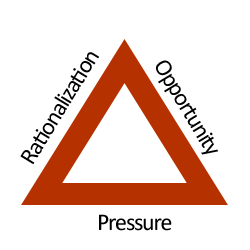You’re probably already familiar with the law firm employee convicted in April and sentenced to 4 years in prison after siphoning charity donations over a 13 year period. Effected beneficiaries included Cancer Research, Great Ormond Street, local hospices along with various animal charities.
Laurna Porter, along with her accomplice, Julie Atkins, abused her position as a probate manager whilst operating across two different solicitors’ firms embezzling money from 23 estates between 2006 and 2018. Fraudulent payments were disguised as gifts or debt settlements with Porter writing cheques to Atkins, avoiding raising suspicion by specifically targetting estates with no living relatives and thus minimal external oversight.
The offences were finally discovered when Ms Porter switched firms to Glaisyers and irregularities were uncovered when a £5000 payment to Ms Atkins was uncovered, triggering an audit where the scale of fruadulent activity was revealed. This follows on from the the 5 year sentencing of Peter Holbrook in late 2023, operating under the guise of a financial advisor, for defrauding vulnerable clients to tune of almost £1 million.
With the increasing scrutiny legal practices are finding themselves under, it’s essential to regularly assess how robust your firm’s anti-fraud practices are, both in relation to external threats and, as is increasingly the case, internal threats. A good place to start as a rough overview is to examine The Fraud Triangle model which refers to Opportunity, incentive and rationalisation. The Fraud Triangle, whilst not an absolute indicator of criminal intent, is certainly something all compliance teams and legal practices at large should be very aware of.
It’s incredibly rare that large-scale frauds develop in a vacuum; research conducted by criminologists Edwin Sutherland and Donald Cressey showed that individual acts of fraud are rarely the direct result of inherent personal traits, but rather are highly influenced by conditional environmental factors. As such, many frauds often require 1 or more conditions of the fraud triangle to be met. Whilst I will provide a brief overview on the fraud triangle below, HiveRisk recently hosted a free, in-depth webinar in which our Technical director Gavin Ball, along with Peter Taylor (AKA ‘the fraud guy’) and counter fraud specialist Nina Dayal covered the essentials on fraud and how to immunise your business against it. The speakers in the webinar have decades of combined experience in fraud prevention and free access to the full video can be found here.
Opportunity – This is usually a failure of processes; a lack of supervision, inadequate documentation or weak accounting measures. This can often be a top-down issue with management allowing or encouraging a lax approach to ethical standards and practices. This is something all compliance teams should be aware of, in that it’s not merely a case of drafting watertight policy, it’s also a matter of encouraging management into both adopting and disseminating said policies amongst staff. If there isn’t a strong internal control system some people, as was the case with Ms Porter, can use their knowledge to identify and exploit weaknesses in the system.
Incentive or pressure – This is harder to quantify as companies cannot know what external pressures employees may be experiencing (e.g. gambling addiction or other mounting debts, threat of unemployment etd). There could also be an inbuilt incentive in the company to resort to underhand tactics (for example, bonuses linked to financial performance which might encourage employees to “caress” their figures). This is why it’s important for companies to constantly be evaluating and making the distinction between healthy and unhealthy competition. Also, it’s crucial to foster an open-door policy to reporting issues/potential breaches – specifically, if an employee feels they can freely and openly discuss issues or problems before they escalate, it’s far easier to provide solutions. A culture of transparency is a vital part of helping to prevent fraudulent behaviour down the line.
Rationalisation – Given enough time, people can convince themselves of almost anything if unchecked. Related to the top-down examples set by management we discussed earlier, if employees observe senior staff routinely bend or break the rules, it makes it easier for them to justify similar behaviour to themselves. Further, if an employee deems fraudulent behaviour as necessary – for example, a fraudulent act could provide a net-positive for the business -, or perhaps they might consider it a harmless or victimless crime (“A small embezzlement wouldn’t even register against this huge multi-national…”) Disgruntled employees might also be able to rationalise frauds if they felt an employer was treating them unfairly
As previously mention, for a more in-depth look at criminal behaviour in law, what expect and how to immunise your business against fraud, be sure to watch HiveRisk’s free webinar ‘How to rip off the business: A masterclass in Fraud Threats and Vulnerabilities in Law Firms’

